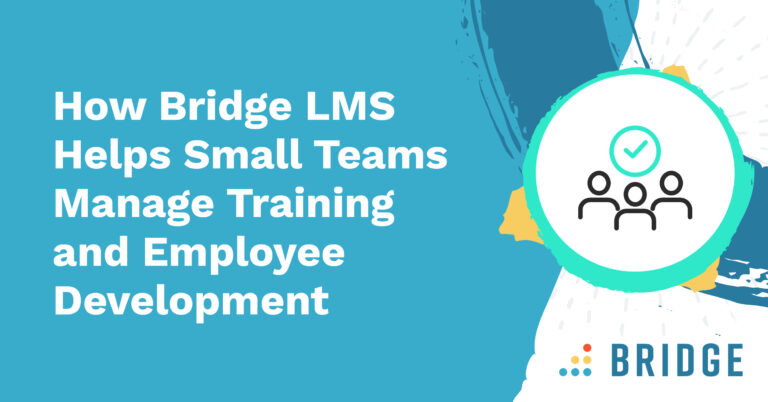If you want your teams to make time for learning, whether that’s within your learning management system (LMS), via face-to-face training, or some other format, you need to establish that they’re allowed to put aside a portion of their working lives to pursue new knowledge and skills.
This form of sanctioned learning time needs to be implemented company-wide, supported by all departments, and—crucially—communicated to your employees.
If your people aren’t aware of your learning-related policies, or if they’re not confident in those rules being enforced, any efforts to cultivate an atmosphere of continuous professional development will fall at the first hurdle!
The Missed Opportunities of Workplace Learning
The importance of this first step has been spelled out in a 2022 report in which an enormous 88% of respondents claimed that, given the opportunity, they’d happily engage in their employers’ learning and development programs.
This commitment to self-improvement and professional development was further highlighted by the 84% of respondents who would be willing to speak to a career coach to receive guidance on a range of topics including how to advance in their careers.
At first glance, this looks like an encouraging statistic. Surely, if employees are so keen, they should have no trouble making the time to incorporate eLearning programs into their schedules.
However, as the report suggests, it’s all about providing the opportunity to learn and develop.
Your organization might offer the best learning and development program in the world, but if your people don’t feel that they have the opportunity to learn, they’re just not going to engage with your courses—no matter how well your program’s crafted.
As such, while the ultimate goal is for your people to proactively make the time to learn, you still need to ensure that you’ve given employees the freedom and flexibility to make that choice.
ENCOURAGE LEARNING BY ENGAGING YOUR TEAMS | ‘3 Employee Engagement Ideas for Remote Workers’
The Benefits of Protected Learning Time: Google’s “20%” Approach
There’s nothing new or outlandish about giving employees a little time to develop work-adjacent projects and skills. In fact, organizations that embrace this philosophy are in good company, joining the likes of Google—which owes a portion of its present-day success to the concept.
Google’s “20% time” principle was first publicly outlined in a letter written by founders Larry Page and Sergey Brin, who described the idea as follows:
“We encourage our employees, in addition to their regular projects, to spend 20% of their time working on what they think will most benefit Google… this empowers them to be more creative and innovative. Many of our significant advances have happened in this manner”.
These significant advances include the likes of Gmail and Google Ads, both of which originated as projects by employees looking to challenge themselves in their company-sanctioned learning time.
And, while the idea has been popularized by Google, plenty of significant organizations have been known to dabble in some variation of 20% time at one stage or another, including Apple, Atlassian, and the BBC.
Though Google placed an emphasis on using 20% time to develop projects, the same principles can absolutely be applied to learning and development programs, too. In professions like medicine, for example, protected learning time is a recognized and growing practice, with movements underway in the UK to extend the policy to pharmaceutical professionals.
Most workers are busy people who can’t make time to learn without the support and administrative structure provided by their employers.
So, before working out how learners can make time for development, the question is: how can employers offer learning time in the first place?
HELP YOUR LEARNERS BY INCREASING YOUR BUDGET | ‘How To Get Your CEO To Increase L&D Budgets’
Calendarize Learning and Protect Productivity by Cutting Out Meetings
If your HR or training department is looking to follow in Google’s footsteps, you can’t go wrong by calendarizing a prescribed amount of ring-fenced time for every employee.
It doesn’t have to be 20% of their time—with effective learning content, an employee can learn something new in as little as an hour or half an hour per week. The important part is simply to make learners aware that they’re allocated time which can be taken without any guilt or concerns over missed work.
In fact, you can take steps to ensure that no productivity losses occur when you designate employee learning time. While this process does involve formally sacrificing a fraction of your employees’ working hours, you can mitigate any negative effects by identifying under-utilized time and returning it to your people.
You don’t need to look far to find a valuable source of wasted time. A joint study by Otter.ai and Dr. Stevel G. Rogelberg of UNC Charlotte found that cutting down on unnecessary meetings could allow smaller companies to save around $2.5m per year. Companies of over 5,000 people, meanwhile, could save $100m or more.
Not only is this a cost-effective move, but a reduced meeting schedule gives employees valuable amounts of time and energy back, ready to be redirected toward the far more productive avenue of learning and development.
If you’re offering a concrete amount of protected time per week, that doesn’t mean your people have to complete their courses according to a fixed schedule. The best time for work-related learning will depend on the preferences of each individual, the fluctuating nature of work schedules, and the length of the courses you’re providing.
MAKE YOUR MEETINGS COUNT | ‘One-on-One Meetings: How the Personal Touch Improves Workplace Performance’
Protected Time Is Just the Start
Download our full ebook and discover a full range of approaches designed to encourage your people to make time for learning, from microlearning strategies to mobility-based incentives.




